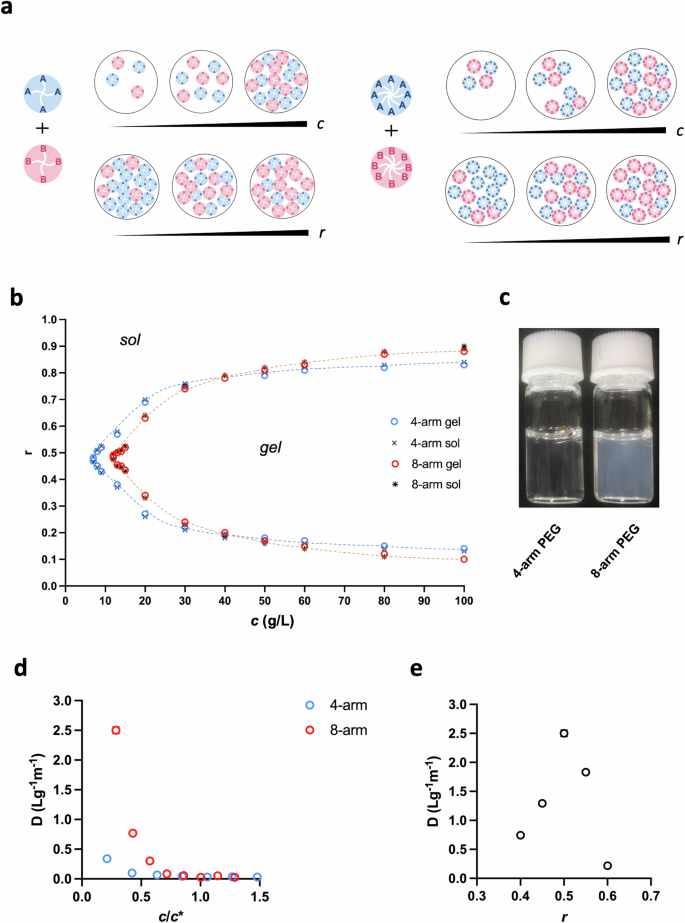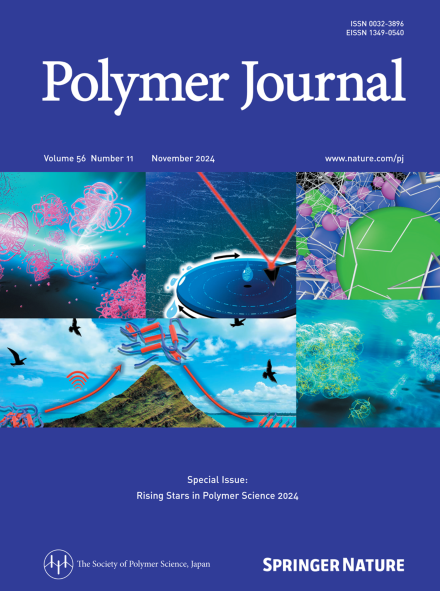多臂 PEG 水凝胶的成骨分化能力:凝胶-凝胶相分离在细胞分化中的作用
IF 2.3
4区 化学
Q3 POLYMER SCIENCE
引用次数: 0
摘要
由于材料的理化性质会影响细胞活性,因此开发生物活性支架对组织工程至关重要。最近,我们发现渗滤诱导的四臂聚乙二醇(PEG)水凝胶实现了凝胶-凝胶相分离(GGPS),在体内具有组织亲和性。然而,4-臂结构是否是将 PEG 水凝胶用作支架的最佳配置仍不清楚。在本研究中,我们研究了增加分支因子对 GGPS 的影响。与 4 臂 PEG 水凝胶相比,8 臂 PEG 水凝胶的 GGPS 程度更高,疏水性也更强。我们在 PEG 水凝胶中引入了 RGD 序列,以直接评估 GGPS 的生物活性,特别是其对成骨细胞活性的影响。与 4 臂 PEG 水凝胶相比,8 臂 PEG 水凝胶虽然没有增强细胞粘附性,但却增强了成骨细胞的分化。因此,由 GGPS 介导的 8 臂 PEG 水凝胶有望成为成骨细胞分化的支架,并有可能成为未来骨组织工程进步的基础。本文章由计算机程序翻译,如有差异,请以英文原文为准。


Osteogenic differentiation capabilities of multiarm PEG hydrogels: involvement of gel–gel-phase separation in cell differentiation
The development of bioactive scaffolds is essential for tissue engineering because of the influence of material physicochemical properties on cellular activities. Recently, we discovered that percolation-induced 4-arm polyethylene glycol (PEG) hydrogels achieved gel–gel phase separation (GGPS), which has tissue affinity in vivo. However, whether the 4-arm structure is the optimal configuration for the use of PEG hydrogels as scaffolds remains unclear. In this study, we investigated the effect of an increased branching factor on GGPS. Compared with the 4-arm PEG hydrogel, the 8-arm PEG hydrogel presented a greater degree of GGPS and increased hydrophobicity. We introduced the RGD sequence into PEG hydrogels to directly assess the biological activity of GGPS, with a particular focus on its effects on the activity of bone-forming osteoblasts. Although the 8-arm PEG hydrogel did not enhance cell adhesion, it enhanced osteoblast differentiation compared with the 4-arm PEG hydrogel. Therefore, the 8-arm PEG hydrogel mediated by GGPS shows promise as a scaffold for osteoblast differentiation and holds potential as a foundation for future advancements in bone tissue engineering. The degree of gel-gel phase separation (GGPS) was compared using multi-arm poly(ethylene glycol) (PEG) hydrogels. GGPS can occur at c < c*, with 8-arm PEG exhibiting a stronger turbidity (D) indicating stronger GGPS compared to 4-arm PEG. This indicates that phase-separated PEG can be obtained at low concentrations simply by increasing the number of branches. Furthermore, phase-separated 8-arm PEG showed higher osteogenic differentiation in vitro.
求助全文
通过发布文献求助,成功后即可免费获取论文全文。
去求助
来源期刊

Polymer Journal
化学-高分子科学
CiteScore
5.60
自引率
7.10%
发文量
131
审稿时长
2.5 months
期刊介绍:
Polymer Journal promotes research from all aspects of polymer science from anywhere in the world and aims to provide an integrated platform for scientific communication that assists the advancement of polymer science and related fields. The journal publishes Original Articles, Notes, Short Communications and Reviews.
Subject areas and topics of particular interest within the journal''s scope include, but are not limited to, those listed below:
Polymer synthesis and reactions
Polymer structures
Physical properties of polymers
Polymer surface and interfaces
Functional polymers
Supramolecular polymers
Self-assembled materials
Biopolymers and bio-related polymer materials
Polymer engineering.
 求助内容:
求助内容: 应助结果提醒方式:
应助结果提醒方式:


